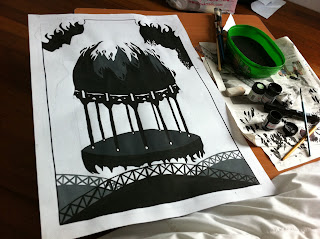Tessellation goes back from M.C. Escher and William Morris. By seeing his artwork, I was inspired to do different types of patterns. I have to say, it did provoke my art sense in way that yes, art involves some mathematical thinking. Through Tessellation, we have to calculate how those pieces fit together to form an image. I won’t say it’s an easy task because it actually takes time to make sure it’s perfect.
The first one is Figure Ground:

The second one is Closure

Third is Proximity

Could you guess what the image forms? If it wheels then you guessed it correctly! Proximity is basically images that goes from big to small or vice versa
Fourth is Similarity

Fifth is Continuity.

Final one is Alignment.

These are more various kinds of Tessellation that I helped me along the way.











To end it. Tessellation is indeed an interesting subject to practice on It’s just a matter of the desire and of course, dedication to do it. At start I had dislike how the rough sketch had looked but once I finish with the work; coloured it. I loved it. Definitely will do someday but not soon.
A little fact: Tessellation comes from the Latin word Tessella, which means a small cube or a tile.





































